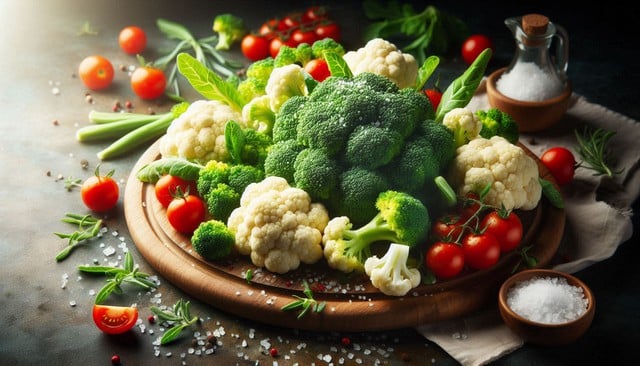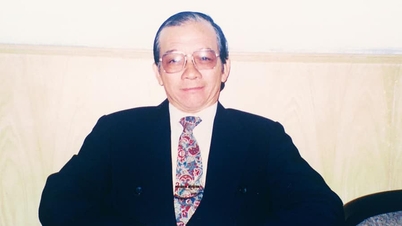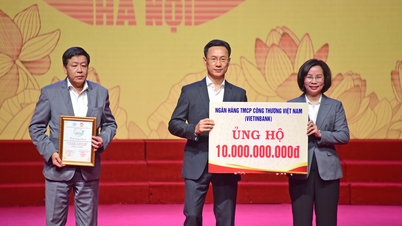Two nutritionists working in the US, Ms. Anthea Levi and Lindsey DeSoto, point out the positive effects of vegetable dishes that are the source of sulforaphane on the body.
Cancer prevention support
Sulforaphane has been studied for its anti-cancer properties thanks to its effects:
Reduce inflammation: Sulforaphane activates a protein called Nrf2, which boosts antioxidants that protect cells from inflammation. At the same time, this compound also inhibits NF-κB - a factor that increases inflammatory responses in the body.

Sulforaphane is a compound created when you chew, chop, or mince cruciferous vegetables like broccoli, cabbage, and cauliflower.
ILLUSTRATION: AI
Neutralizes toxins: Sulforaphane is a powerful source of antioxidants, which help neutralize free radicals – unstable atoms that can damage cells.
Protects DNA: Several studies have shown that sulforaphane helps protect DNA from mutations that can lead to cancer.
Slows tumor growth: This compound can prevent cancer cells from dividing, thereby slowing the spread of tumors in the body.
A 2015 clinical trial found that men with prostate cancer who took sulforaphane supplements daily for six months reduced or delayed recurrence by 86%.
Sulforaphane may also reduce the risk of breast cancer and lung cancer, according to the health news site Health .
Prevent heart disease
The foods listed above that help the body produce sulforaphane also provide many nutrients that support the heart. The antioxidants help reduce the risk of heart disease, while the abundant fiber in them has been shown to help reduce cholesterol and the risk of heart disease.
Reduce blood sugar levels
A 2017 study found that people with diabetes who supplemented broccoli sprouts daily for 12 weeks had significantly reduced blood sugar levels.
Protect the brain
Sulforaphane may help protect nerve cells from degenerative diseases like Alzheimer's and Parkinson's, so regularly eating cruciferous vegetables may help protect your brain and overall health.
How to make sulforaphane from vegetables
Cruciferous vegetables do not contain sulforaphane; the compound is created when vegetables containing glucosinolate, a precursor to sulforaphane, are cut, chopped, or chewed. Foods rich in glucosinolate include: Bok choy, broccoli (especially sprouts), Brussels sprouts, cabbage, cauliflower, radishes, lettuce, and watercress.
The amount of sulforaphane absorbed depends on how it is prepared: Raw vegetables provide more than cooked vegetables. Steaming gently for a few minutes is best, but avoid boiling, microwaving, or pressure cooking, which can destroy up to 90% of the glucosinolates.
Prepared this way, cruciferous vegetables can bring more antioxidants and fiber that are good for the heart, brain and blood sugar, according to Health.
Source: https://thanhnien.vn/nhung-loai-rau-giup-ngan-ngua-ung-thu-benh-tim-tieu-duong-185251102085822016.htm


![[Photo] Comrade Nguyen Duy Ngoc holds the position of Secretary of the Hanoi Party Committee](https://vphoto.vietnam.vn/thumb/1200x675/vietnam/resource/IMAGE/2025/11/04/1762234472658_a1-bnd-5518-8538-jpg.webp)
![[Photo] Ca Mau "struggling" to cope with the highest tide of the year, forecast to exceed alert level 3](https://vphoto.vietnam.vn/thumb/1200x675/vietnam/resource/IMAGE/2025/11/04/1762235371445_ndo_br_trieu-cuong-2-6486-jpg.webp)
![[Photo] Government holds a special meeting on 8 decrees related to the International Financial Center in Vietnam](https://vphoto.vietnam.vn/thumb/1200x675/vietnam/resource/IMAGE/2025/11/04/1762229370189_dsc-9764-jpg.webp)
![[Photo] Ho Chi Minh City Youth Take Action for a Cleaner Environment](https://vphoto.vietnam.vn/thumb/1200x675/vietnam/resource/IMAGE/2025/11/04/1762233574890_550816358-1108586934787014-6430522970717297480-n-1-jpg.webp)





































































































Comment (0)